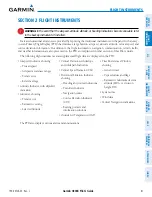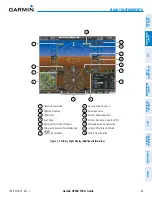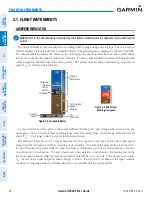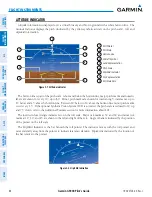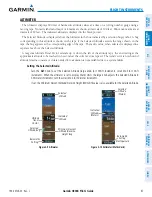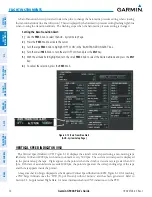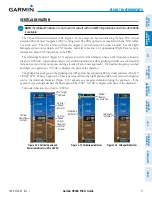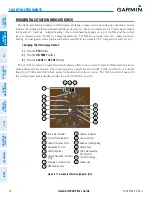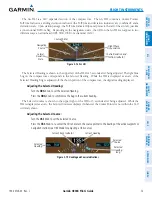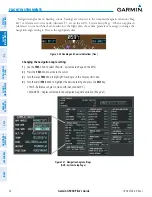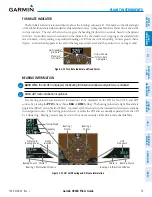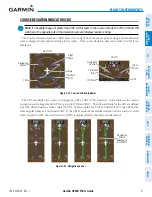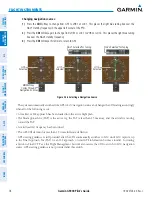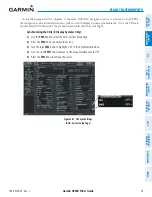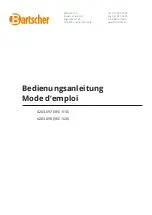
Garmin G900X Pilot’s Guide
190-00726-00 Rev. J
64
FLIGHT INSTRUMENTS
SY
STEM
O
VER
VIEW
FLIGHT
INSTRUMENTS
EIS
AUDIO P
ANEL
& CNS
FLIGHT
MANA
GEMENT
HAZARD
AV
OID
ANCE
AFCS
ADDITIONAL FEA
TURES
APPENDICES
INDEX
2.1 FLIGHT INSTRUMENTS
AIRSPEED INDICATOR
NOTE:
Refer to the documentation provided by the kitplane manufacturer for airspeed criteria and Vspeed
values.
The
Airspeed Indicator displays airspeed on a rolling number gauge using a moving tape. The
true airspeed
(TAS) is displayed in knots below the Airspeed Indicator. The ground speed is displayed to the left of the TAS.
The numeric labels and major tick marks on the moving tape are shown at intervals of 10 knots, while minor
tick marks on the moving tape are indicated at intervals of 5 knots. Speed indication starts at 20 knots and the
actual airspeed is displayed inside the black pointer. The pointer remains black until reaching never-exceed
speed (V
NE
), at which point it turns red.
Figure 2-4 Red Pointer
Showing Overspeed
Figure 2-3 Airspeed Indicator
Actual
Airspeed
Airspeed
Trend
Vector
True
Airspeed
Ground
Speed
Color-coded
Speed
Ranges
Vspeed
References
A color-coded (red, white, green, yellow, and red/white ‘barber pole”) speed range strip is located on the
moving tape. The colors denote flaps operating range, normal operating range, caution range, and never-exceed
speed (V
NE
). A red range is also present for low speed awareness.
The Airspeed Trend Vector is a vertical, magenta line that appears to the right of the color-coded speed
range strip when airspeed is either accelerating or decelerating. One end of the magenta line is anchored to
the tip of the airspeed pointer while the other end moves continuously up or down corresponding to the rate
of acceleration or deceleration. For any constant rate of acceleration or deceleration, the moving end of the
line shows approximately what the indicated airspeed value will be in six seconds. If the trend vector crosses
V
NE
, the text of the actual airspeed readout changes to yellow. The trend vector is absent if the speed remains
constant or if any data needed to calculate airspeed is not available due to a system failure.












